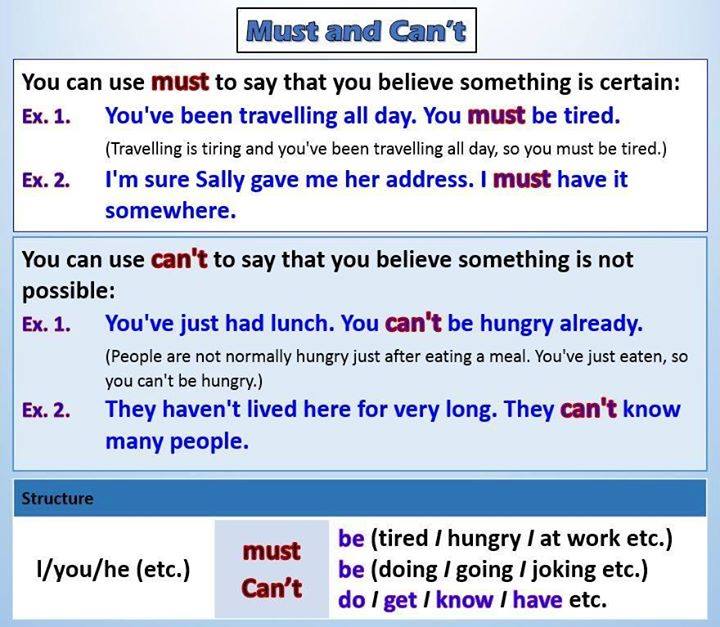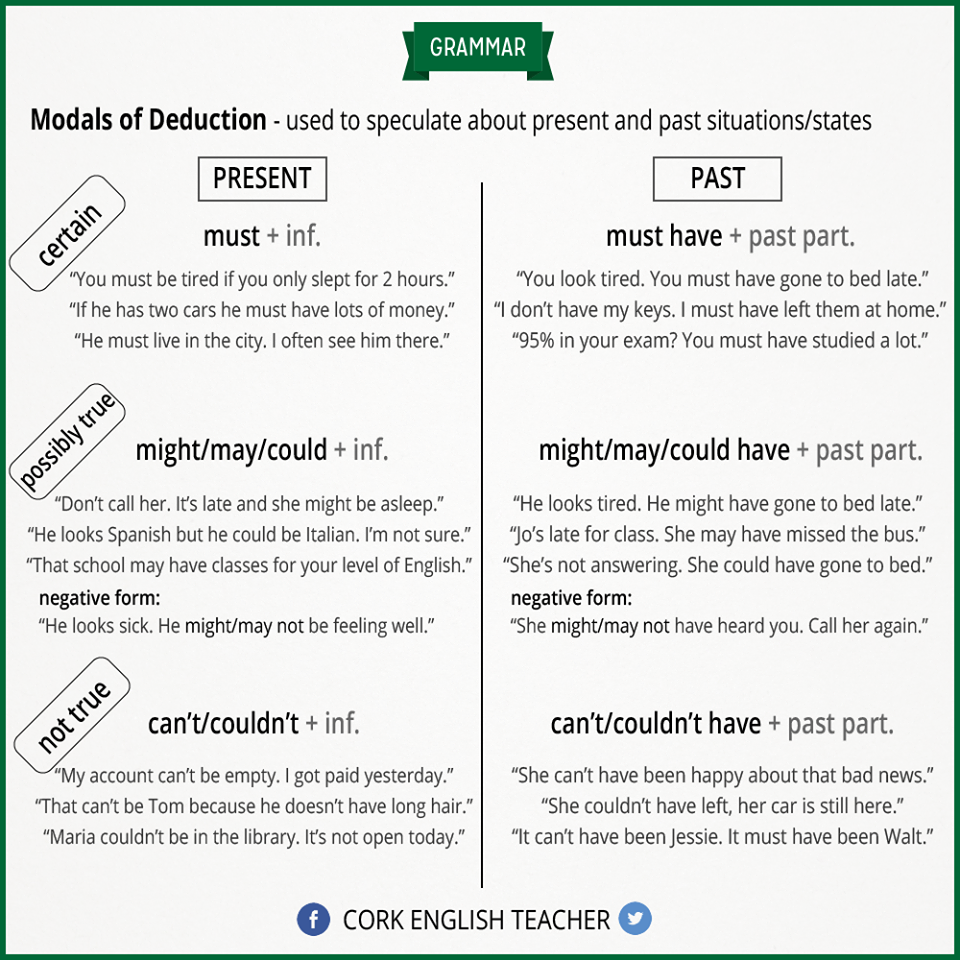lunes, 27 de febrero de 2017
question words.
| Hello again! How are you today? |
| It's Friday and time for another fun English tip to help you improve your English. Today we are going to look at the words we use in English to find out information: question words. Es viernes y toca otra divertida lección de inglés para ayudarte a mejorar. Hoy vamos a ver las palabras que usamos para saber información en inglés: las “question words”. What?: ¿Qué? / ¿Cuál(es)? • What do you want to eat? • ¿Qué quieres comer? • What is the capital of Finland? • ¿Cuál es la capital de Finlandia? When?: ¿Cuándo? • When are they coming for dinner?• ¿Cuándo vienen a cenar? Where?: ¿Dónde? • Where is your house? I can't remember!• ¿Dónde está tu casa? ¡No me acuerdo! Who?: ¿Quién(es)? • Who is your best friend in your class?• ¿Quién es tu mejor amigo de la clase? How?:¿Cómo? • How do I write my name in Chinese?• ¿Cómo se escribe mi nombre en chino? Which?: used to talk about choices or alternatives in questions. Which: lo usamos para hablar sobre elecciones o alternativas. • Which bag should I choose? I like all of them!• ¿Cuál de los bolsos debería escoger? ¡Me gustan todos! Look at an interview in which Janet (J) interviews Mark (M), an actor, to see how to use them more naturally. J: Hi, Mark! I'm really happy to finally meet you! I have lots of questions for you today. First of all, how are you feeling? Are you nervous? J: ¡Hola, Mark! ¡Me alegra conocerte por fin! Hoy tengo muchas preguntas para ti. Primero, ¿cómo te encuentras? ¿Estás nervioso? M: No. I never get nervous during interviews. M: No, nunca me pongo nervioso durante las entrevistas. J: OK, so where were you born? J: Entonces, ¿dónde naciste? M: I was born in the UK but I moved to LA a few years ago. M: Nací en el Reino Unido pero me mudé a Los Ángeles hace unos años. J: When exactly did you move there? J: ¿Cuándo te mudaste exactamente? M: I moved there in 2010. In the UK I was a waiter but now I am an actor. M: Me mudé en 2010. En el Reino Unido era camarero, pero ahora soy actor. J: Which do you prefer: being a waiter or an actor? J: ¿Qué prefieres, ser camarero o actor? M: An actor, of course! I earn more money! M: Actor, ¡por supuesto! ¡Gano más dinero! J: What do you like doing in your free time? J: ¿Qué te gusta hacer en tu tiempo libre? M: I love swimming, playing computer games and seeing my friends and family. M: Me encanta nadar, jugar a videojuegos y ver a los amigos y a la familia. J: Who is the most important person in your life? J: ¿Quién es la persona más importante de tu vida? M: My wife! M: ¡Mi mujer! Have a great weekend! Best wishes, |
| Hello! How are you today? I hope you are having a great day. |
| Today, as part of our quick lesson, we are going to look at two Don’t be confused; I’ll show you how easy it is ☺ The two present forms we use for the future are the present simple and the present continuous. Firstly take a look at a short email Eric sends to his mother containing the present simple and the present continuous. Primero echa un vistazo a un breve correo electrónico que Eric le manda a su madre y que contiene el presente simple y el presente continuo. Hello, Mum! Tomorrow I’m leaving for Australia. My plane leaves at 6 a.m. I need to take the night bus to the airport. It leaves the bus station at 3 a.m! I’m staying with some friends of mine for a month, which I’m really looking forward to. I chose to travel now because my exams are in June and I need to study a lot during that time. We are going to tour the west coast of Australia on a yacht with William’s parents. I’ll give you a call as soon as I arrive. Mañana me voy a Australia. Mi avión sale a las 6 de la mañana. Necesito coger el autobús de noche para llegar al aeropuerto. ¡Sale de la estación de autobuses a las 3 de la madrugada! Me quedaré con unos amigos durante un mes, lo que me hace mucha ilusión. Decidí viajar ahora porque mis exámenes son en junio y necesito estudiar mucho durante esa época. Vamos a hacer un tour de la costa oeste de Australia con el yate de los padres de William. Te llamaré en cuanto llegue. Lots of love, Eric The present simple is used to talk about scheduled events.El presente simple se usa para hablar de eventos planeados. Look at some examples from the above text: - My plane leaves at 6 a.m. - It leaves the bus station at 3 a.m. - My exams are in June. The present continuous is used to talk about arrangements or plans that we have made for the future.El presente continuo se usa para hablar de planes que hemos hecho para el futuro. Look at some examples from the above text: - I’m leaving for Australia. - I’m staying with some friends. We also use the present simple after certain words or phrases, for example, “when” and “as soon as”.También usamos el presente simple con ciertas palabras o frases, como por ejemplo “cuando” y “en cuanto”. For example, - When I arrive in Australia, I’ll call you.- Cuando llegue a Australia, te llamaré. - I’ll call you as soon as I arrive.- Te llamaré en cuanto llegue. I hope this has helped you! Enjoy your Friday! Take care, |
The difference between “see””, “watch” and “look”
| Hello everyone, I hope you are having a fantastic Friday! |
| Today's lesson will be a bit different! Keep reading... Let's start by reading the following conversation between Luis and Juliette: Comencemos leyendo una conversación entre Luis y Juliette: L: You should watch Gordon Ramsey's new cooking show. It's really good! L: Deberías ver el nuevo programa de cocina de Gordon Ramsey. ¡Es muy bueno! J: Yes, I saw you sent my brother an email about it. J: Sí, vi que se lo enviaste a mi hermano por correo. L: I have watched every episode. The other day I was looking for a chocolate cake recipe and found his show online. We should watch it in the evening. L: He visto todos los episodios. El otro día estaba buscando una receta para un pastel de chocolate y encontré su programa online. Lo podríamos ver esta noche. J: That sounds perfect! J: ¡Perfecto! Do you know what the difference between “see””, “watch” and “look” is? Let's have a look! ;) ¿Conoces la diferencia entre “see”, “watch” y “look”? ¡Vamos a ver! We use see to mean simply that an image comes into our eyes. It may not be a choice, if our eyes are open, we see things. For example: Utilizamos “see” cuando nos referimos a una imagen que tenemos delante. “See” no es una decisión, sencillamente cuando tenemos los ojos abiertos, vemos cosas. Por ejemplo: “I can see clouds in the sky” “Veo nubes en el cielo” When we look, we concentrate on seeing something. It is a choice. For example: Cuando decimos “look”, nos concentramos en ver algo. Es una decisión consciente. Por ejemplo: “Look! Isn't this a lovely dress?” “¡Mira! ¿No es un vestido precioso?” There are a lot of phrasal verbs for “look”. Here are three very common phrasal verbs. Hay muchos phrasal verbs con “look”. Aquí tenemos tres muy comunes: - Look at: used to direct someone's attention to something or someone. - Look at: lo utilizamos para mostrar algo, hacer que la gente mire algo. - Look for: to search for something or someone. - Look for: buscar algo o alguien. - Look after: to take care of someone or something. - Look after: cuidar de alguien o de algo. Ok, let's see if you understood today's lesson: what is the correct answer to the following quiz? Ok, vamos a ver si entendisteis la lección de hoy: ¿cuál es la respuesta correcta? 'Did you ______ the football match last night?' A. look B. look at C. watch See you next week! |
Suscribirse a:
Entradas (Atom)












